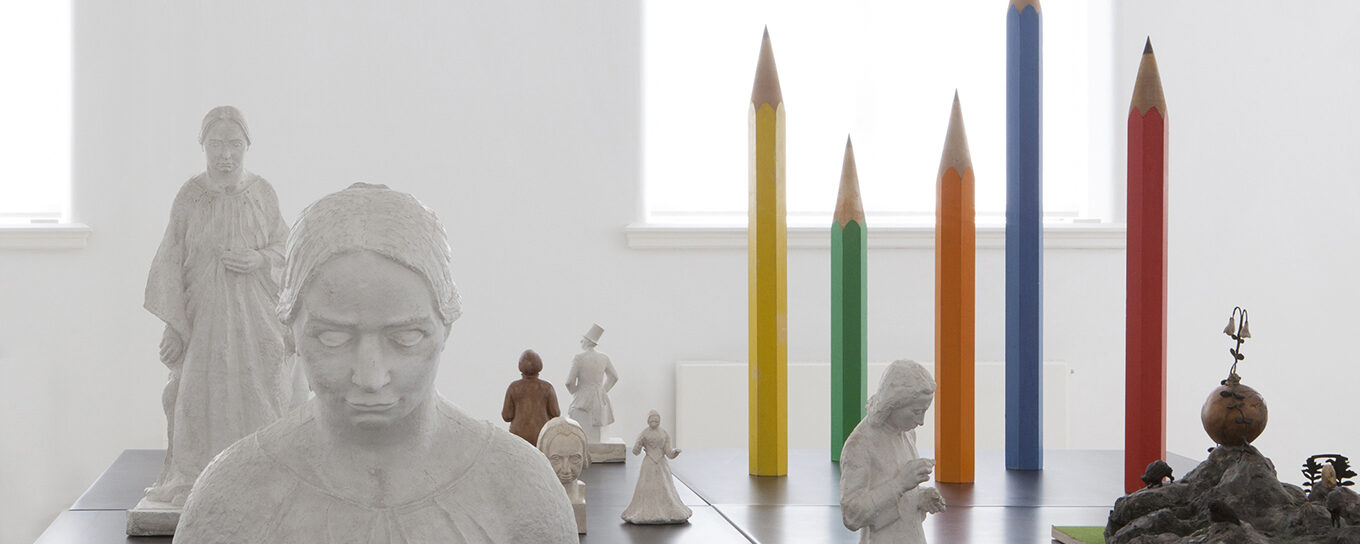- Closed
- Closed
Memory and Monuments
Which people and events are represented in our shared spaces and which narratives have been left out? These questions are more relevant than ever and the role played by monuments and memorials today is a hot topic of debate. These rooms contain sketches and models for monuments, memorials and memorial sites from the early 1900s to the present day.
There are monuments to the victims of natural disasters, wars and other violent events, but also memorials dedicated to industries and individuals. You will also find examples of what can be referred to as anti-monuments: critical and sometimes parodic works where artists both literally and figuratively turn the usually heroising and vertical forms of traditional monumentality upside-down.
For thousands of years, people have erected memorials and monuments, above all to people who were considered outstanding by their contemporaries or according to the dominant values of other eras. In a historical perspective, monuments constitute perhaps the most important type of art in public space. Erecting monuments is an expression
of the power to choose how history is to be depicted. Monuments represent an official version of history, a public memory which, like other memories, nevertheless depends on recall, oblivion and repression. On plinths, rulers and conquerors coexist with cultural and scientific figures. In the vast majority of cases, they are men.

